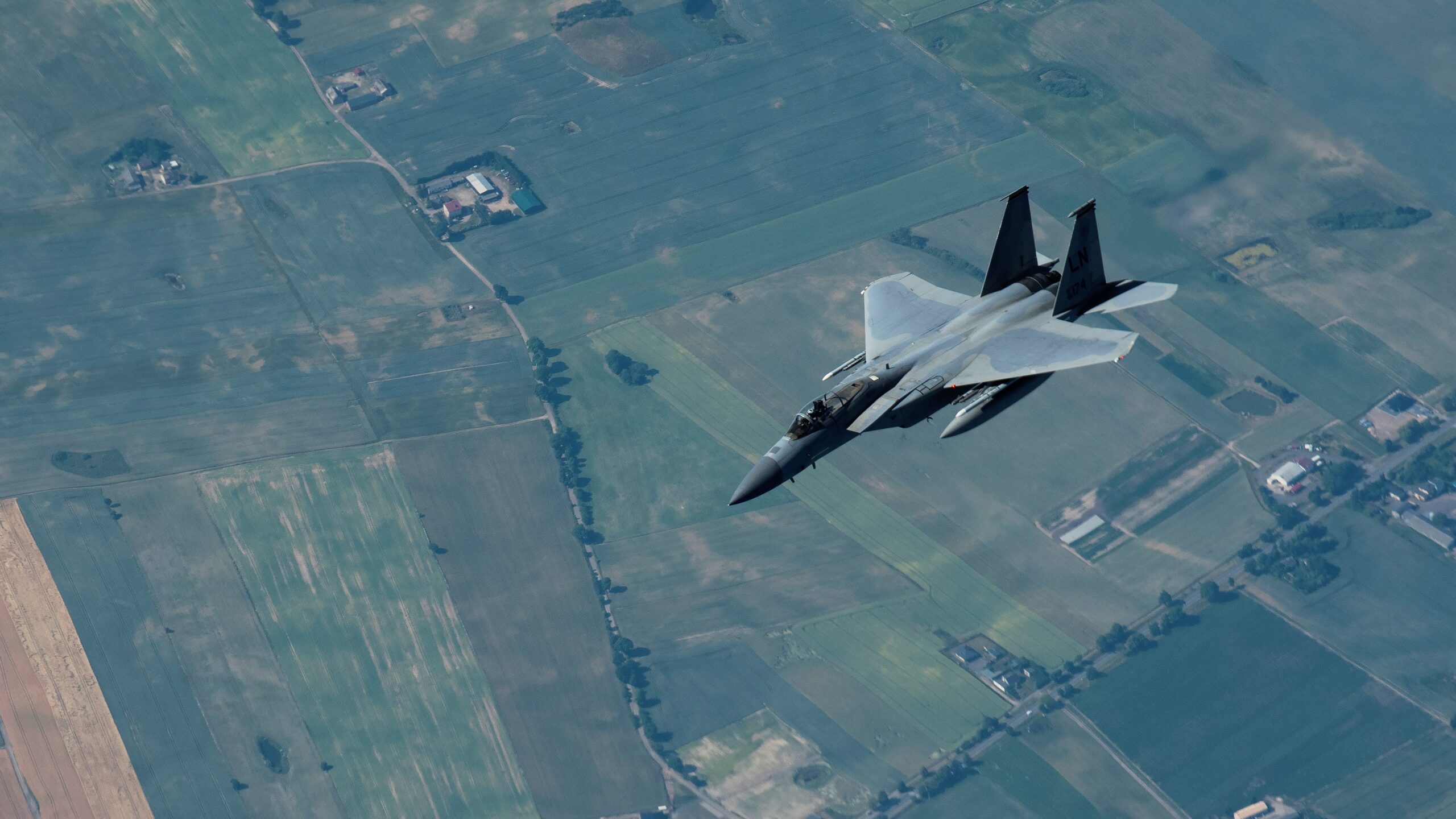
A US Air Force F-15 flies above Europe. (U.S. Air Force/ Westin Warburton)
AFA: The head of US Air Forces in Europe and Air Forces Africa (USAFE) would not rule out a future change in Air Force basing in Europe, but pledged that allies and partners on the continent would be well informed of any process before changes would be made.
Speaking to reporters at the annual Air Force Association conference, Gen. Jeffrey Harrigian acknowledged that potential changes to force posture in Europe, including basing, are part of the overall posture review currently being conducted by the Defense Department. That review is expected to conclude by the end of the year, with its findings driving both the National Defense Strategy and fiscal year 2023 budget request.
“We have had discussions on, what do we think is the right number of locations in terms of basing and really, what kind of capabilities do we need” to deter Russia in Europe, Harrigian said. “There’s going to be some things that will get talked about, and we’ll have to see how that plays out.”
Still, even if changes happen, “I don’t see huge movement,” Harrigian said.
“My job is to provide what we believe is our requirements in terms of what capabilities we need to execute the mission set we get, which is basically, you know, to be the blunt force and the force that’s going to give time, space for others to arrive there,” he said. “So we’ll provide our advice on that. And then I think as we look at it globally, and what capabilities we have, [US European Command is] gonna get a vote. The Air Force is going to provide their perspective. And I think we’ll be in the ballpark.”
USAFE almost went through a dramatic realignment in Europe during the last year of the Trump administration, when the Pentagon announced plans to move 12,000 personnel and an air wing out of Germany. Under that plan, the 480th Fighter Squadron would have moved from Spangdahlem Air Base in Germany, taking its F-16CJ/DJ Vipers and hundreds of personnel to Aviano in Italy. Department planners slow-rolled the move, which was widely seen as being politically motivated, and it was officially killed when the Biden administration took over.
Allies in Europe were vocal that they were not consulted before the 2020 plan was announced, and Harrigian made clear that if anything were to shift under the posture review, all countries impacted will be brought into the conversation early.
“I think the important part will be that, number one, as we go through this, [that] we have the discussion with the allies and partners to be transparent,” he said. “As we have more clarity on, you know, what the specific objectives are as they look at this posture review, I think that’s where that conversation needs to happen, such that there’s no surprises and everybody knows what the assumptions are and then how we’re trying to achieve that.”
Speaking of allies, Harrigian also said that he had spoken with the French air chief Philippe Lavigne over the last week, since the high-profile political fight broke out between the US and France in the wake of the new AUKUS agreement. That disagreement, which involved France withdrawing its ambassador from both the US and Australia, has not bled down to the operational level the USAFE head said.
“On the mil-to-mil side, we’ve got a job to do and we’re going to keep doing that,” Harrigian said.






















